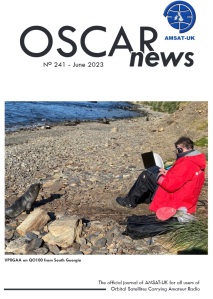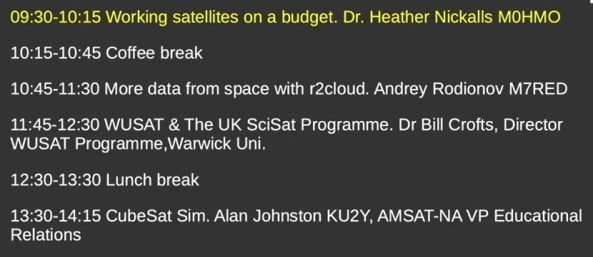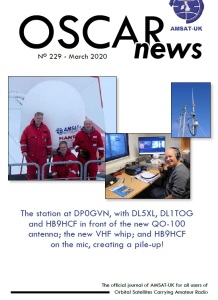AMSAT-UK is pleased to announce that the 2023 Colloquium will take place alongside the RSGB Convention at Kents Hill Park Conference Centre, Milton Keynes on the weekend of 14/15th October 2023.
Full details of the Colloquium will be made available nearer the time on the AMSAT-UK website at https://amsat-uk.org
As in previous years, the AMSAT-UK Colloquium will run as a separate stream within the RSGB Convention and will include presentations on a variety of satellite and space related topics.
The Annual General Meeting of AMSAT-UK will take place during the colloquium. The calling notice for the AGM will be issued once the programme of events has been finalised.
An AMSAT Gala Dinner will be held on the evening of Saturday 14th October at the Marriott Delta Hotel on Trimbold Drive, Kents Hill, Milton Keynes. Attendance is restricted this year at the hotel and a limited number of tickets are on sale via the AMSAT-UK Online Shop. https://shop.amsat-uk.org
The cost of the Gala Dinner is £39 per person and includes a three course meal with tea / coffee at its conclusion.
Alongside the Gala Dinner, AMSAT-UK has reserved a number of rooms at the Marriott Delta for the evening of Saturday 14th October 2023. These rooms include breakfast on Sunday 15th and are priced at £84 per room for single occupancy or £95 for double occupancy. Hotel accommodation and tickets for the Gala Dinner can be purchased on the AMSAT-UK Online Shop.
Bookings for the Hotel and Gala Dinner are now available on the AMSAT-UK Shop, but must close on 1st October 2023 unless sold out sooner, so please book early to avoid disappointment.
Entrance to the RSGB Convention is managed by the RSGB and you will be required to purchase Day Tickets for the Saturday and/or Sunday to attend the AMSAT-UK Colloquium. These can be booked via the RSGB website at https://rsgb.org/main/rsgb-2023-convention/ Early bird discounts are being offered by the RSGB via their website.
73
Barry Sankey G7RWY and Dave Johnson G4DPZ
AMSAT-UK Joint Secretary
email secretary@amsat-uk.org







You must be logged in to post a comment.